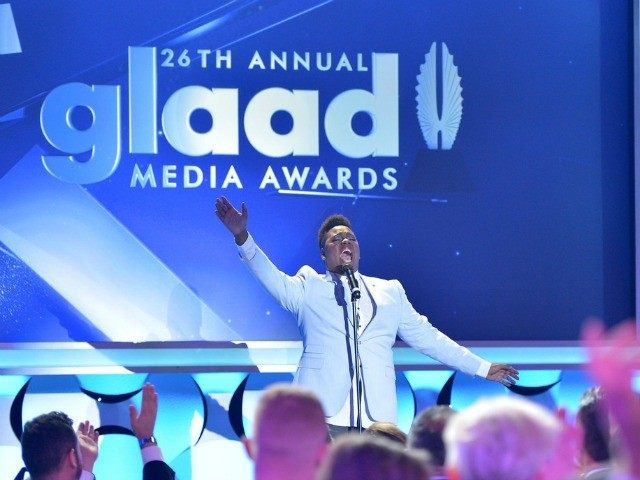Hollywood’s major studios warmed to the idea of demonstrating white lesbian, gay, and bisexual characters on film last year, but completely ignored the transgender community in 2014, according to GLAAD’s third annual Studio Responsibility Index.
Released Tuesday, the Gay & Lesbian Alliance Against Defamation (GLAAD) report studied releases from the seven major film studios in 2014 and discovered that 20 of the 114 movies to hit theaters last year had characters who were gay or bisexual, equaling 17.5%. The change is up from 16.7% in 2013, where gay and bisexual characters appeared in 17 of 102 films.
According to the group, the increase in airtime does not mean equal representation, as its report finds 65% of gay characters were men, 30% were bisexual, and about 10% were lesbian characters.
Additionally, 2014’s characters were 67.9% white, and a substantial number of gay roles were written for comedies (42.1%), animated or family films (23.8%), or dramas (18.2%), and not major action or sci-fi films.
Despite the overall increase in gay and bisexual characters, 2014’s major films did not include a single transgender character.
Per the report, the most inclusive major studio last year was Warner Brothers, as 7 of 22 films it released in 2014 (32%) were LGBT-inclusive. Paramount came next with 3 of 13 films (23%), followed by Universal with 3 of 14 films (21%), and Fox with 3 of 17 films (18%). Two of Lionsgate’s 17 films were inclusive (12%), while Disney and Sony were last with 1 of 13 (8%) and 1 of 18 films (6%), respectively.
For the first time, GLAAD examined smaller four smaller affiliated studios, and found that 10.6% of the 47 total films released by Fox Searchlight, Focus Features, Roadside Attractions, and Sony Pictures Classics were inclusive.
GLAAD President & CEO Sarah Kate Ellis said:
More than twenty years ago, the film Basic Instinct was released, and GLAAD’s relationship with Hollywood began to take shape. The film’s portrayal of bisexual and lesbian women as duplicitous and psychotic murderers was yet another example of Hollywood’s longstanding practice of portraying lesbian, gay, bisexual, and transgender (LGBT) characters as evil villains and tragic victims. This time, however, the LGBT community was going to make their voices heard.
….
As television and streaming services continue to produce a remarkable breadth of diverse LGBT representations, we still struggle to find depictions anywhere near as authentic or meaningful in mainstream Hollywood film. The industry continues to look increasingly out of touch by comparison, and still doesn’t represent the full diversity of the American cultural fabric.
Ellis said that overall, she believes major Hollywood studios demonstrate “very little consistency when it comes to depicting LGBT people,” and that already in 2015, Warner Brothers has released one of the most problematic films she has seen in years in the “gay-panic exploiting” Will Ferrell comedy Get Hard.

COMMENTS
Please let us know if you're having issues with commenting.